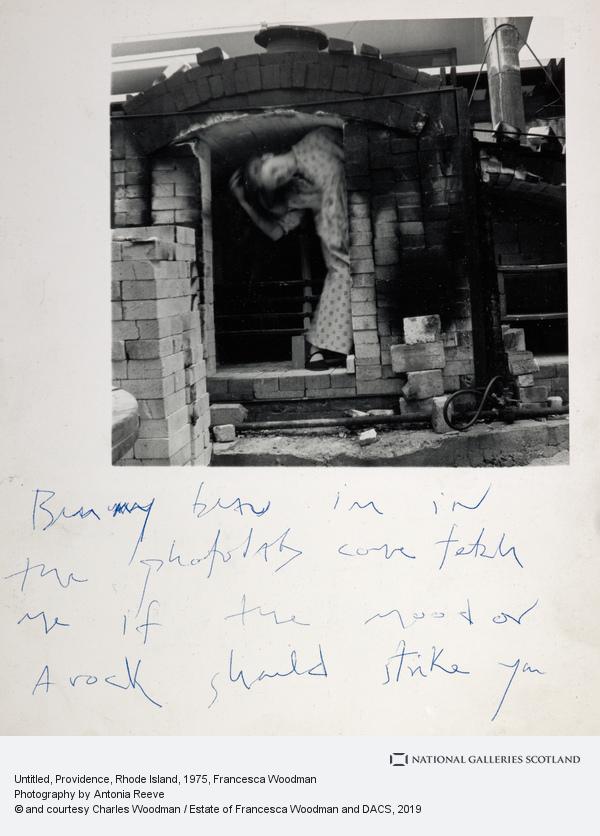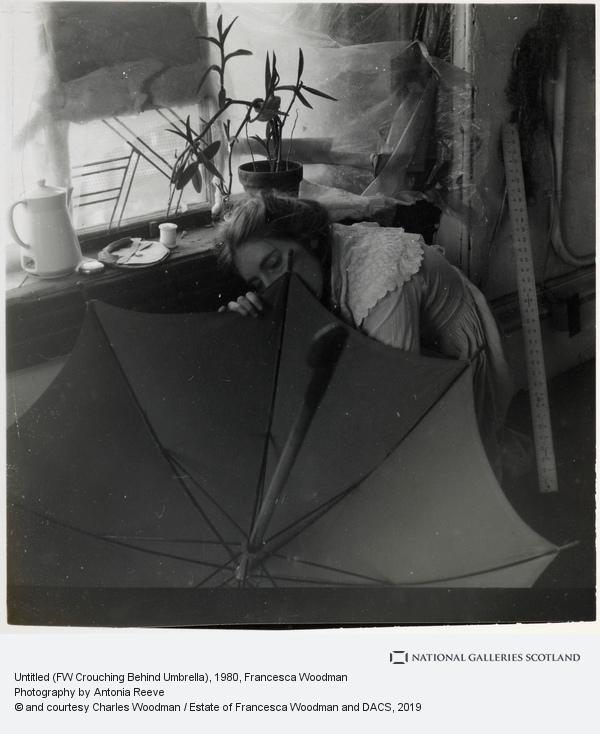Self Evidence is an exhibition at the National Portrait Gallery of Scotland, which is being shown, appropriately, in the Robert Mapplethorpe Gallery. The three photographers shown were all interested in the idea of identity, or the self, and how to show it.
Diane Arbus (1923-1971)
Arbus is a fascinating photographer who took a collection of images of what she called her ‘singular people’. These were often of people who were different in some way, for instance, the Jewish giant, and the images of people from nudist camps. There are ethical dilemmas in her images, especially when looked at from todays stance. Did she ask permission? Did she explain how she was using the images? Did she pay for them? The answer to all of these is probably no – but nor did any of the photographers of her time. She undoubtedly took images that would be difficult to take today – those of people with a learning difficulty and physical challenges. Nowadays we would need to find out who has the appropriate guardianship and rights of welfare attorney, get formal permission, and credit the people involved. Does that mean the images should not have been taken then, when it was a different world? Does it mean they should not be shown now? What is obvious from the images is that Arbus engaged with the people. For the images of those people in a nudist camp she took the pictures while naked to make them feel comfortable. She talked to the people with learning problems and visited them – something that was rarely done at that time, when ‘mental issues’ were hidden away. She gave them a voice, even if they did nor fully understand what was being said. Arbus addressed identity by looking at other people rather than herself.
Francesca Woodman (1958-1981)
In Woodman’s short life she took a vast number of images, many which have never been on display. The ones shown in this exhibition are a variety of images mainly of herself or her boyfriend, Ben. They are small, black and white, mostly square. Some have been written across and were used as notes to send to others. Many are partially out of focus. She utilised mirrors, reflections and odd shafts of light to illuminate the important areas. Many of the images show herself partly hidden or on the edge of the frame, such as Untitled (FW crouching behind an umbrella). She becomes a ghostly partial presence. Do the images tell you about Woodman – or hide her? It is difficult to read her images nowadays without considering her suicide at a young age, and wondering what impact this had on her photography – but much of her oeuvre was taken well before that and it is almost certainly simplistic to assume that all the images were taken by someone who was depressed! Much is experimental, much echoes the type of photography and art she was exposed to.
Robert Mapplethorpe (1946-1989)
The exhibition of Mapplethorpe self-portraits shows a range of images from those of him in his early bad boy, leather and whips phase to ones with a suited and serious mien to those taken just before his death. They often show him playing a role, holding a knife or a gun, possibly copying stances from films. They become gradually less controversial, although not completely so. There is one from 1985 which shows him wearing horns. Is he playing as a satyr or as a devil? Is it another riff on his earlier images that use themes from the Catholic Church? The final one is of his face and hand holding a stick with a skull. All else is black. A true play on a ‘memento mori’ image, made more poignant because he was clearly aware of his own impending death. All of the images are beautifully crafted, balanced and set formally within the frame. Whatever you think of his lifestyle and the photographs he chose to take it is impossible to deny that he was a skilled artist, who used his own life to tell a story about a population that was mainly hidden then, and often still is.
Summary
It was fascinating to see these three photographers side by side. They all died young, two by suicide, one because of AIDS. They were all interested in portraiture. The photographs they took were very different. Arbus showed her interest in people by taking images of others. Woodman photographed herself, but in an elliptical, sideways way, hiding as much as she showed. Mapplethorpe’s images are clear, in your face and controversial – but does his apparent clarity hide as much as Woodman’s less overt images do?






